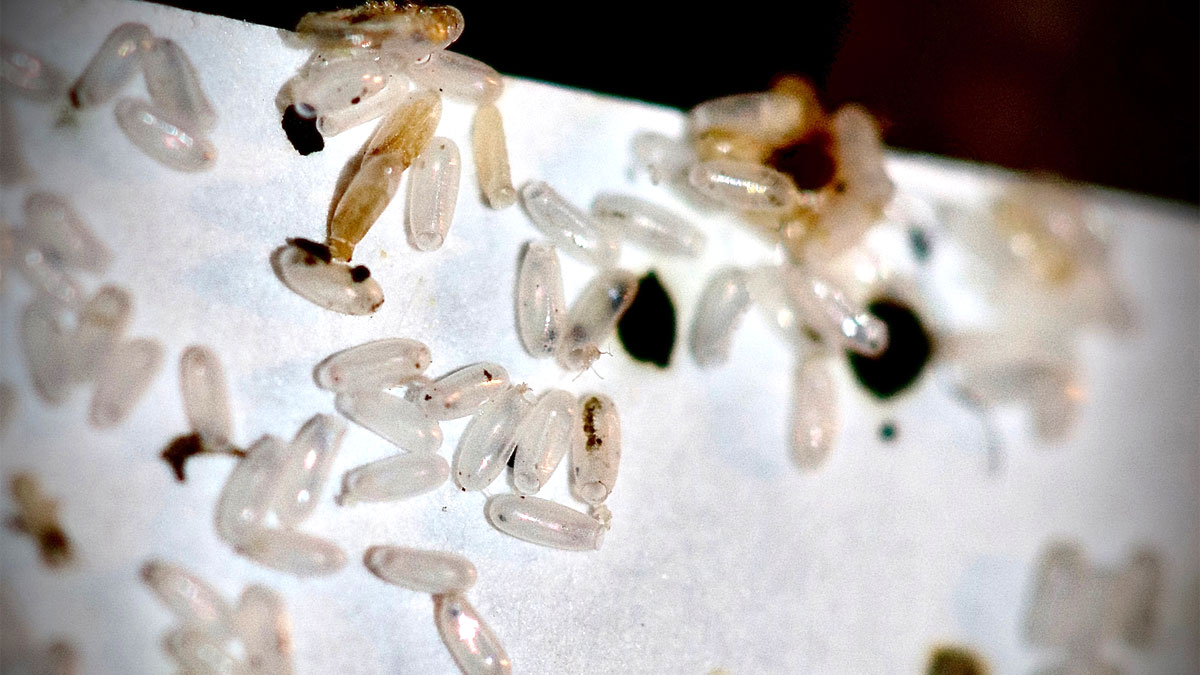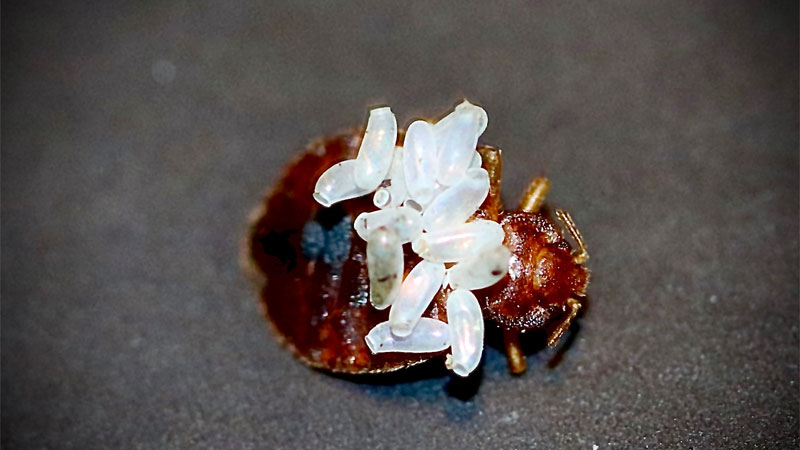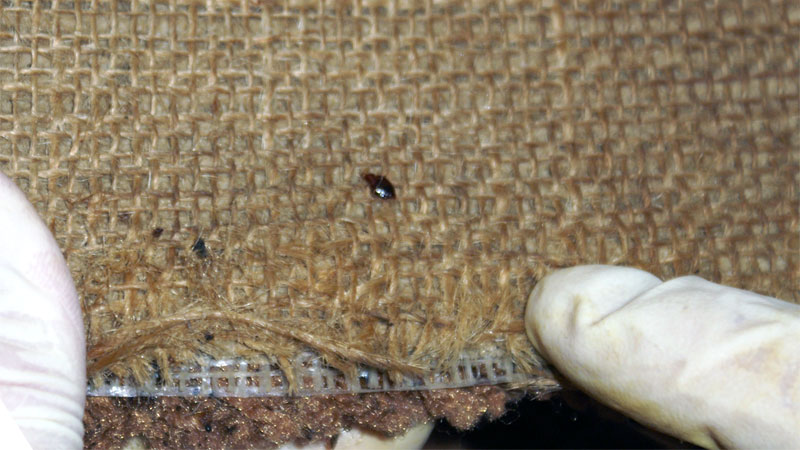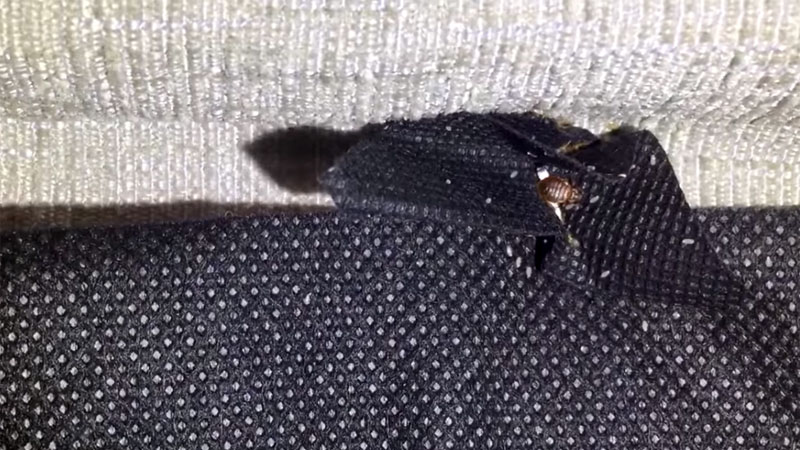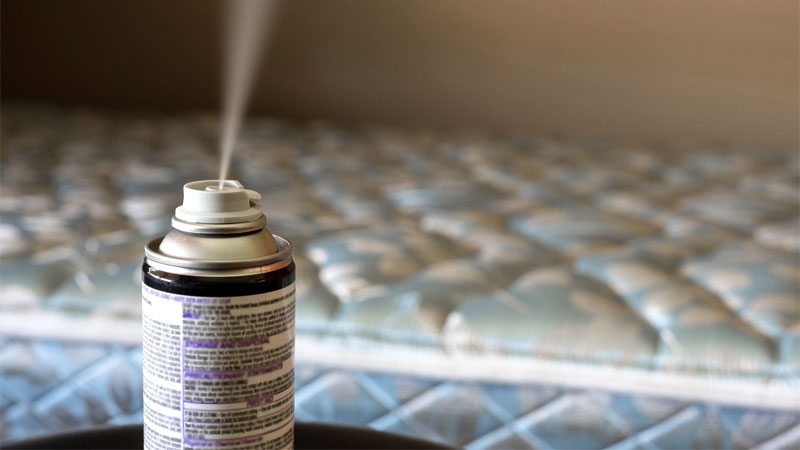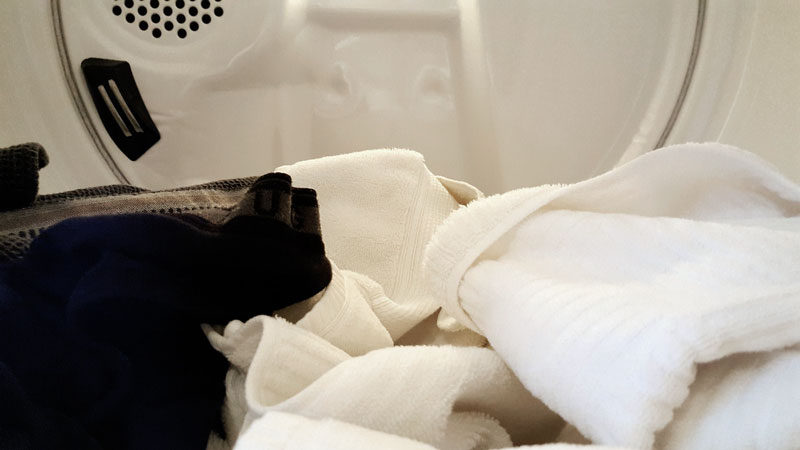If there’s one thing we’ve learned about infestations, it’s that pests are like icebergs – the part you see is only a tiny percentage of the whole.
This is even more true of bed bugs, since it can be hard to spot even one bed bug without discovering their bites, their frass, or doing a thorough inspection. Bed bug eggs are the real threat and make up the majority of an infestation.
So how do you spot the eggs, determine if they’ve already hatched, and figure out how long you have to remove them? Read on to find out the answers to all these questions and more.
How Long Does It Take for Bedbug Eggs to Hatch?
We’ll be perfectly honest here – it doesn’t take long for an egg to hatch once laid. In fact, in perfect conditions, they’re known to hatch in as little as 2-4 days! The “good” news is that in most cases, the eggs will take a bit longer, hatching around 5-10 days.
Of course, as we hinted at already, there’s a lot more to this question that needs to be discussed.
See Also: Can Bed Bugs Climb?
What do Bed Bug Eggs Look Like?
Bedbug eggs are tiny white ovals that measure a mere 1/10 of an inch long. As the egg matures, it will develop a red spot where the bed bug is showing through the egg casing.
The egg has a sticky coating that helps it from being dislodged and protects against pesticides. This means you won’t be able to deal with those unborn vampires easily before the eggs hatch.
How Many Eggs Are There?
You know how this goes: a man goes to the doctor and is told he has a serious illness. His first question is invariably “How bad is it, doctor?” Well discovering bed bugs means this will probably be your first question as well.
A single fertile female (Cimex lectularius) can lay up to 500 eggs in her lifetime with up to five eggs laid per day on average, while the tropical bed bug (Cimex hemipterus) will only lay about 50.
The more she feeds, the more she can lay, with the potential to lay eggs every single day of her adult life if kept fed. Now imagine if there’s more than one female!
Where Are the Eggs?
Bed bugs want their offspring to survive, so they’re very careful about where they lay their eggs. Sometimes they’ll lay an isolated egg, but they’ll often lay several at once.
The eggs are well-hidden in cracks, crevasses, mattress seams, and other places that are hard for potential predators to reach. This means that the eggs you find may not be the only ones present.
How Long Do Bed Bug Eggs Remain Viable?
Imagine if you could create conditions that are hostile to bed bugs. Just how long can an egg survive before it has to hatch or die?
These eggs only remain viable for up to 12 days, with viability dropping off starting at 10 days, meaning that you can create hostile conditions and kill off the bed bugs before they can even hatch.
Environmental Conditions That Help Bed Bug Eggs Hatch
There are three main factors that play a role in the hatching process. The more factors reach ideal ranges, the faster the eggs will hatch and the higher the rate of successful hatchings.
#1 – Blood Access
Adult bed bugs are known for biting humans, but (much like fleas) are capable of biting your pets. This is very rare because bed bugs aren’t able to penetrate a pet’s fur, so it’s likely to only happen if no other source of blood is available and the bed bug is extremely lucky.
However, since cat or dog blood is different from human blood, the bed bug won’t get the nutrients it needs. This means they may not be able to lay eggs at all or, if they do manage, the eggs might not be viable.
Keep in mind, this scenario occurring is about as likely as lightning striking twice, so don’t put your hopes in sterile eggs.
#2 – Humidity
Bedbug eggs are at their most viable in moderate humidity, and they tend to do really well in the higher end of normal household humidity levels.
If the humidity drops too low, the eggs will dry out and die. On the other end of the spectrum, high humidity can result in fungal growth which will also kill the eggs.
#3 – Temperature
The optimum temperature range for bed bugs to incubate and hatch is 75 to 80 degrees Fahrenheit. Thus, having temperatures outside of this range can affect the speed in which eggs reach maturity and can even damage them.
Read Also: Can Bed Bugs Survive In Carpet?
Environmental Conditions That Prevent Bed Bug Eggs From Hatching
As we’ve already touched upon, humidity extremes can kill bed bug eggs, and a lack of nutrition can prevent them from even being laid. But what about temperature?
Bed bug eggs will die if exposed to temperatures of 118 degrees Fahrenheit for more than 20 minutes, with higher temperatures killing them even faster (180 degrees can kill eggs on contact).
On the other hand, colder temperatures will slow down the hatching process. At 70 degrees, for example, only 60 percent of the eggs will have hatched at the end of six days and 90 percent by the end of nine days.
Knowing this, it’s entirely possible to kill the eggs by freezing them at a temperature low enough that it prevents them from hatching before their viability period runs out. Below zero temperatures can kill an egg in two hours or less.
Dealing With Bed Bug Eggs
So now that we know how long it can take for bed bug eggs to hatch and what affects their hatching time, let’s look at how you can destroy the eggs, as well as how to tell if they’ve already hatched.
Signs the Eggs Have Hatched
This is the part that can be frustrating. The good (or bad) news is that there are several signs that egg you’ve found has already hatched. Here are the two most common ones:
The Casing Is Translucent or Feathery
When an egg hatches, the casing will be left behind. It will no longer have red spots and will take on an almost feathery appearance where the break has occurred. It may also look sunken and will no longer have the sticky coating, making them easy to dislodge.
The Presence of Nymphs
Nymphs are also tiny and white, resembling a sesame seed in size and shape. They’ll seek out a blood meal immediately, which is necessary for the development of an exoskeleton. When they’ve had a meal, their abdomen will become red and swollen, although the rest of them will remain white.
Methods That Won’t Kill Bed Bug Eggs
So how do you kill the eggs before they hatch? Well let’s start with some things that won’t work. The most infamous of these is the fogger or bed bug bomb.
These can kill some adults and nymphs, but they are totally useless against bed bug eggs and survivors can develop a resistance to future bombing attempts, resulting in superbugs. Similarly, the eggs are resistant to pesticides and can likewise result in creating superbugs if not used responsibly.
Methods That Will Kill Bed Bug Eggs
Ok now that we’ve done all the bad news, it’s time for some good news. As mentioned, high heat will kill bed bug eggs, although you have to be careful not to damage your furniture in the process. A good steamer is perfect for treating mattresses, and you can place infested linens in a dryer on high heat.
But there are also other ways to tackle the eggs that you might not have considered. Our old friend food grade diatomaceous earth is once again a hero, as sprinkling this wonder dust on the eggs will not only damage them but kill the nymphs when they try to emerge. Plus it’s safe for use around you and your entire family (including those with four legs).
Rubbing alcohol is also a popular remedy that can somewhat help with population control but isn’t a very good weapon. However, when sprayed liberally on the eggs, there’s a chance it could dry them out before they’re able to hatch. This remedy is a little hit-or-miss, but still worth trying.
Touching back upon steam cleaners, the ones used for carpets will often not be hot enough. Instead you’ll want to buy or rent a commercial grade model (it’s well worth the price tag!), which can easily reach over 200 degrees, killing bed bugs and their eggs instantly.
Finally, invest in a bed bug cover for your bed. These are relatively cheap and will trap bed bugs inside where they’ll starve to death. Even better, the covers are waterproof to water resistant, meaning they’re easy to wipe down whenever you change the bedsheets.
Methods that MAY Kill Bedbug Eggs
Finally, let’s look at some things that might kill the eggs, over time. These will often involve methods we’ve already discussed.
When vacuuming up beg bugs and their eggs, it’s important to dispose of contents safely. The best method for this is to put the vacuum bag or contents of the canister in an airtight plastic bag. When the eggs hatch, the nymphs won’t have a human body to feed on and will die.
We’ve also talked about using carpet cleaners and your dryer. While you might also want to throw your linens in the washer, there’s no guarantee of the bed bugs or their eggs drowning. The fact that both a washer and carpet cleaner use soap may help suffocate them. However, your best bet is using a steamer or dryer instead.
- How to Get Rid of Hawks - March 8, 2024
- How to Get Rid of Pill Bugs (Rolly Pollies) - March 1, 2024
- How to Get Rid of Groundhogs (Woodchucks) - February 5, 2024

